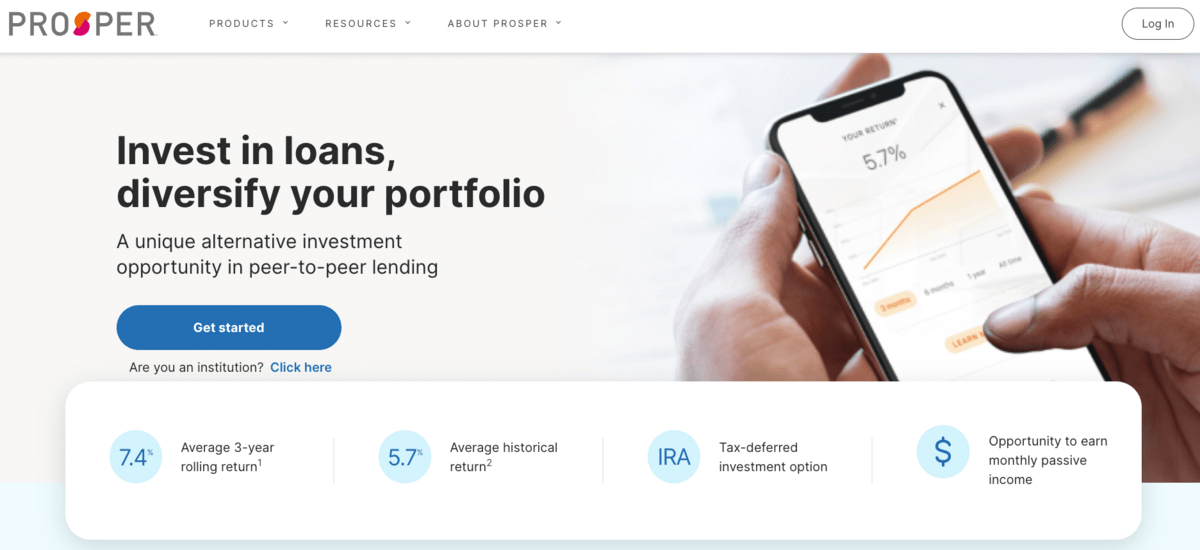Investing in assets is one of the best ways to build wealth, but how do you get started?
With hundreds of types of assets to invest in, dozens of market sectors and asset classes, and tons of platforms to choose from, it can be hard to know where to begin.
That’s why we put together this extensive guide — to help you make sense of it all.
We’ll break down how to invest in assets, including stocks, bonds, real estate, and alternative investments. Plus we’ve rated each option by difficulty and risk to help you choose the best assets for you.
Keep reading to learn about how to acquire assets, build your wealth, and grow your passive income.
How to Invest in Assets: The Bottom Line
Investing in assets allows you to multiply your money with very little effort on your part. However, choosing the right assets involves knowing your financial goals, risk tolerance, and timelines for things like retirement or other future income needs.
When it comes to good assets to buy, it’s generally accepted that holding a mix of assets allows you to diversify and potentially generate better returns with lower overall risk.
How to Invest in Assets: Top Platforms
For fractional fine art | |
For stocks + ETFs | |
For real estate | |
For REITs | |
For automated investing | |
For CDs and high-yield savings accounts | |
For P2P lending | |
For investing in companies | |
For mutual funds | |
For bonds |
eToro is a multi-asset platform which offers both investing in stocks and cryptoassets, as well as trading CFDs.
Please note that CFDs are complex instruments and come with a high risk of losing money rapidly due to leverage. 61% of retail investor accounts lose money when trading CFDs with this provider. You should consider whether you understand how CFDs work, and whether you can afford to take the high risk of losing your money.
This communication is intended for information and educational purposes only and should not be considered investment advice or investment recommendation. Past performance is not an indication of future results.
Copy Trading does not amount to investment advice. The value of your investments may go up or down. Your capital is at risk.
Cryptoasset investing is highly volatile and unregulated in some EU countries. No consumer protection. Tax on profits may apply.
Don’t invest unless you’re prepared to lose all the money you invest. This is a high-risk investment and you should not expect to be protected if something goes wrong. Take 2 mins to learn more
eToro USA LLC does not offer CFDs and makes no representation and assumes no liability as to the accuracy or completeness of the content of this publication, which has been prepared by our partner utilizing publicly available non-entity specific information about eToro.
Note: We earn a commission for this endorsement of Fundrise.
What Are Good Assets to Buy? 10 Top Options in 2025
1. Fractional Fine Art
- Difficulty: 3
- Risk level: 4
Fine art has proven a fantastic investment over the past few decades, offering generous potential returns and price appreciation. The problem is that fine art typically costs millions of dollars and is out of reach for most investors.
With the advent of fractional share investing, you can now buy ownership in million-dollar pieces of art. Platforms like Masterworks focus on curating highly sought-after modern art pieces by artists like Picasso, Money, and Banksy. They store them securely and sell them when the market price has appreciated.
You can buy shares of ownership in these art pieces and realize the appreciation once it is sold. The returns have been impressive — in the last few years, its investors have realized annualized net returns of 17.8%, 21.5%, 35%, and more from these opportunities. Since artwork is its own market and uncorrelated with stocks and other assets, it can be a hedge against market downturns.
If you’ve wanted to own fine art but don’t have $10 million burning a hole in your pocket, check out Masterworks.
2. Stocks + ETFs
- Difficulty: 2
- Risk level: 3
Investing in the stock market has provided solid returns for over 100 years.
It’s never been easier to invest in the stock market, with fees dropping to a minimum, investing apps making it easy to invest, and a wide range of ETFs and stocks becoming available.
Brokerages like eToro offer access to stock and ETF trading with 0% commissions. Plus, you can buy fractional shares of any of the stocks or ETFs on the platform and even earn dividends on them.
Investing in stocks is a higher-risk activity, as businesses can fail, but choosing an ETF that holds hundreds of stocks is a safer bet, and provides great returns. eToro has thousands of ETFs to choose from.
Investing in stocks and ETFs is a great core holding for your portfolio, and it’s as simple as a few clicks.
eToro securities trading is offered by eToro USA Securities, Inc. (“the BD”), member of FINRA and SIPC. Cryptocurrency is offered by eToro USA LLC (“the MSB”) (NMLS: 1769299) and is not FDIC or SIPC insured. Investing involves risk, and content is provided for educational purposes only, does not imply a recommendation, and is not a guarantee of future performance. https://www.wallstreetzen.com is not an affiliate and may be compensated if you access certain products or services offered by the MSB and/or the BD.
3. Real Estate
- Difficulty: 4
- Risk level: 3
Real estate has proven to be one of the best asset classes of all time. With price appreciation, the ability to own cash-flowing rental properties, and tons of tax breaks, owning real estate is one of the best ways to build wealth.
But real estate investing isn’t for the faint of heart. In addition to finding a great deal, purchasing a home, renovating it, and finding renters, you also need to be prepared to handle maintenance and repairs as needed.
If you want to become a real estate investor without the headaches, there are real estate platforms that let you earn real estate income without becoming a landlord. Platforms like Fundrise give you access to real estate deals, and you can invest $10 to get started.
With Fundrise, you can choose from a portfolio of real estate investments, or individual properties. You can buy shares of ownership in real estate, collect dividends from rental income, and benefit from price appreciation when the property is finally sold. This is one of the easiest ways to invest in real estate.
4. REITs
- Difficulty: 2
- Risk level: 4
REITs are real estate investment trusts that allow investors to take part in real estate investments without owning physical real estate. While there are public and private REITs that are not traded on the open market, publicly traded REITs are the easiest to invest in.
Most brokerages offer access to REITs, including eToro, which offers you access to hundreds of REIT investments. On the Webull dashboard, you can sort by industry and find hundreds of real estate investment choices, including REITs.
You can buy and sell REIT funds on eToro with no commissions. Many REITs offer a quarterly dividend, potentially allowing you to grow your passive income.
eToro is a multi-asset investment platform. The value of your investments may go up or down. Your capital is at risk.
5. Automated Investing
- Difficulty: 2
- Risk level: 3
One of the most important aspects of becoming a successful investor is consistency. This means buying assets you want to invest in over a long period of time and investing in those assets regularly.
Automated investing is the process of setting up a recurring deposit into your investment accounts on a regular schedule. Frequency may vary; the goal is to invest in assets over and over without having to think about it.
There are several advantages to automated investing, including removing emotion from your investment decisions, buying when asset prices are low and high, and growing your net worth in the background. There are some great investing apps that help you set up automated investments, with M1 Finance offering the most flexibility with no fees.
M1 Finance lets you invest in stocks, ETFs, and other assets by building an investment portfolio, called a “pie.” You can choose professionally curated “pies” or create a custom one. Then you can set up automatic deposits to your account, and it will be automatically invested into your investment pie based on your chosen assets.
If you want to grow your wealth without thinking about it, automated investing is the best option.
6. CDs + High-Yield Savings Accounts
- Difficulty: 1
- Risk level: 1
If you want to invest in safe assets that won’t lose you money and still provide a solid return, certificates of deposit (CDs) are a great option right now. High interest rates have pushed returns on these accounts up to 4% (or more), and your funds are FDIC-insured so there’s almost no risk.
CDs are time-locked savings accounts that pay a high interest rate in return for locking up your funds for a specific period of time. In most cases, the longer you lock up your money, the higher the interest rate you earn. Recently, with a rapid rise in rates, some of the shorter-term CDs have been paying higher rates, too.
The downside of CDs is that your funds are locked up. If you want to withdraw the money early, you might be hit with an early withdrawal penalty, losing you the interest earned, or even some of your deposit. There are no-penalty CDs available, but the interest rates are typically much lower.
It’s also worth noting that high-yield savings accounts are liquid assets that offer higher interest than regular savings accounts and can still access your funds at any time.
A great source for both CDs and HYSAs? CIT Bank. For instance, right now CIT bank has a 6-month CD available at 5%. Say you invested $20K that would otherwise be sitting in savings — at the end of the 6 months, you’d have $500. Plus, it’s easy to get started — you can set up a new account in about 10 minutes.
7. Peer-to-Peer Lending
- Difficulty: 3
- Risk level: 4
Peer-to-peer lending platforms let you send loans to other individuals and earn a return by collecting interest charged on the loan. While some platforms only allow institutions to invest in P2P loans, others allow individual investors to take part.
Prosper is a popular peer-to-peer lending platform that allows you to lend funds to qualified borrowers and collect interest payments over the life of the loan. Prosper advertises a 7.4% average 3-year rolling return, and allows you to invest as little as $25, which makes it one of the cheapest assets to buy.
You don’t have to be accredited, and you can even automate your investments on a regular basis. There are several investment mixes to choose from, so you can hold a portfolio of several types of loans.
8. Invest in Companies
- Difficulty: 3/5
- Risk level: 5/5
If you’ve ever wanted to start a business, you know the costs can be high. Pair that with competition and the fact that most businesses fail due to a lack of capital, and small businesses can be tough. But if you simply want to help businesses thrive while enjoying some of the rewards of business growth, you can now invest directly.
If you’re an accredited investor and/or something of a speculator, you might be interested in Hiive, a platform that gives accredited investors access to hundreds of private, VC-backed startups before they IPO.
Hiive is a marketplace that connects shareholders of private, VC-backed companies who want to sell their pre-IPO shares to accredited investors.
With no buying fees, the ability to negotiate, and a robust marketplace with thousands of companies, Hiive is potentially a good way to invest in companies before they IPO.
Sign up with Hiive, check out the offerings, build a watchlist, and get notified about any new listings and trades.
Any views expressed here do not necessarily reflect the views of Hiive Markets Limited (“Hiive”) or any of its affiliates. This communication is for informational purposes only, and is not a recommendation, solicitation, or research report relating to any investment strategy or security. Investing in private securities is speculative, illiquid, and involves the risk of loss. Not all private companies will experience an IPO or other liquidity event; past performance does not guarantee future results. WallStreetZen is not affilated with Hiive and may be compensated for user activity resulting from readers clicking on Hiive affiliate links. Hiive Markets Limited, member FINRA/SIPC.
9. Mutual Funds
- Difficulty: 2
- Risk level: 3
Mutual funds are a collection of stocks or other securities that allow investors to own a diversified set of assets within a single fund. Mutual funds are offered by most major investment firms and are typically managed by a team of professionals.
Mutual funds can be actively or passively managed, with actively managed funds charging higher fees for the service provided. Passively managed funds can track the price of an index, such as the S&P 500.
Mutual funds are a good investment for investors who don’t want to choose which assets to invest in but want instant diversification in their portfolio. Some mutual funds have a minimum required investment, and others charge high annual fees, as well as a front-loaded fee.
Investment firms like Vanguard offer access to hundreds of mutual funds for every type of investor. Many offer low fees, and you can find a mutual fund for almost any investment sector on the market.

10. Bonds
- Difficulty: 2
- Risk level: 2
Bonds are debt instruments that allow investors to loan money to corporate or government entities. Bonds provide (somewhat) stable returns and are typically less volatile than stocks. You can invest in bonds through most brokerage firms, or directly from the government through TreasuryDirect.gov.
Bonds are considered a low-risk investment, as they are loans to stable institutions that have a reputation for repayment. There are riskier bonds that you can invest in, or you can spread your risk by investing in a bond index fund.
If you want more stability in your investment portfolio, consider using a broker to buy bonds or bond funds.
If you’re already hooked up with a legacy broker like Schwab, the bond offerings are extensive. But most brokers offer access to bonds — so if you’re already on eToro for stock trading, consider checking out bond funds, too.
eToro is a multi-asset investment platform. The value of your investments may go up or down. Your capital is at risk.
How to Invest in Assets: Best Practices for Beginners
If you’re looking to figure out how to acquire assets, it’s important to have a framework in place before you invest your money into the market. Here are a few best practices to remember:
- Understand your risk tolerance. Before you invest any meaningful amount of money, consider how much risk you are willing to take. If you don’t mind seeing your investments drop 50% in value at any given time, you can take more risks. If you lose sleep seeing the market drop slightly, you probably want to take a more conservative approach.
- Set investment goals. Create a budget and figure out how much you can invest each month. Set an investment goal amount, and commit to investing that amount consistently. This will help you take advantage of compound interest and TIME.
- Choose your investment accounts. Choose what type of account you want to invest in. When saving for retirement, a 401k or IRA account will help you save on taxes. Otherwise, you can choose a regular brokerage account for other investing goals.
- Diversify your investments. Don’t invest your life savings into Tesla (NASDAQ: TSLA), but spread your investments among different asset classes and diversified funds. This will help you generate returns while lowering your overall risk profile.
- Monitor your performance & adjust. Once you’ve started investing, it’s important to keep an eye on your performance. As your goals, risk tolerance, and timelines change, make sure to adjust your portfolio to rebalance as necessary.
Bottom line: Investing is a long-term game, so stick to a plan and stay consistent to build wealth.
Final Word: Buying Assets
Buying assets is one of the best ways to build wealth, and learning how to invest in assets can give you a head start financially.
With so many choices, it’s a good idea to come up with a plan before you start investing or work with a professional who can help you choose the right assets to invest in for your financial goals.
FAQs:
How do I start investing in assets?
You can start investing in assets with very little money using a simple investing app like M1 Finance. You can invest as little as $5 at a time, and choose between stocks, ETFs, and other assets. You can also automate the process with recurring investments on a regular schedule.
What is the best asset to invest in right now?
What are good assets to buy? There are several assets that are providing great returns, even in this volatile market. Several stocks are performing well, and even assets like high-yield savings accounts are providing solid returns. But the best asset to invest in is one that meets your financial goals, risk tolerance, and timelines.
Is investing in assets a good idea?
Investing in assets is one of the most powerful ways to grow your net worth and income over time. Instead of wasting money on liabilities, such as cars, electronics, furniture, and other items that go down in value, investing in assets will grow your money and compound your wealth. So yes – investing in assets is a good idea!
What assets make me money?
To generate passive income by investing in assets, choosing assets like dividend-paying stocks or REITs can earn you money with little action required. Other assets, such as real estate or peer-to-peer lending also offer regular income, but with more involvement and slightly higher risk. But while passive income is important, it’s also important to focus on the total return of any asset you invest in.
Where to Invest $1,000 Right Now?
Did you know that stocks rated as "Buy" by the Top Analysts in WallStreetZen's database beat the S&P500 by 98.4% last year?
Our July report reveals the 3 "Strong Buy" stocks that market-beating analysts predict will outperform over the next year.











